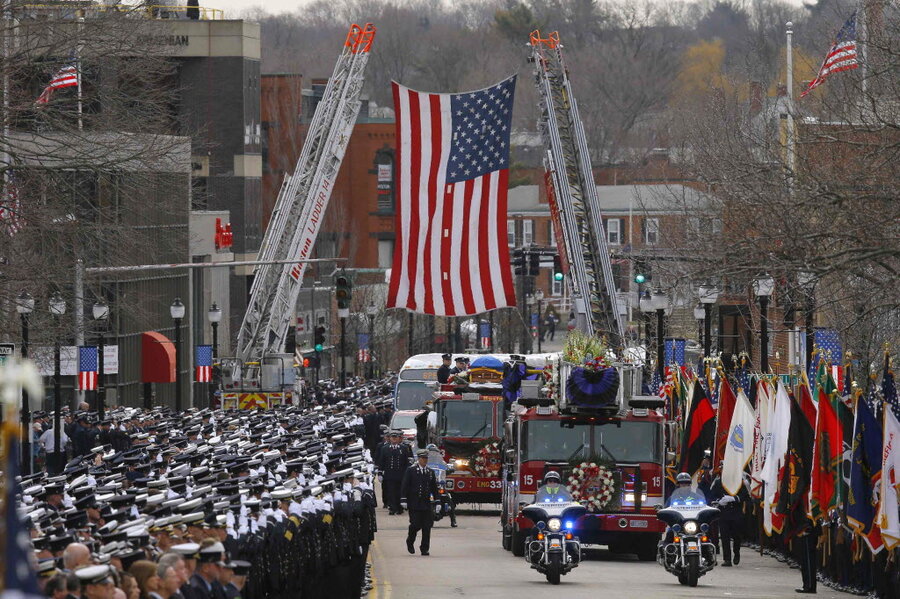Boston Fire Department found at fault in 2014 blaze. How can it improve?
Loading...
A recently released federal report indicates the Boston Fire Department shoulders some of the blame for the loss of two firefighters’ lives during a 2014 brownstone fire.
The report, a 77-page inquiry from the National Institute for Occupational Safety and Health (NIOSH), suggests a lack of training, inadequate staffing, and failure to identify the high-risks involved with the blaze all contributed to the two deaths. External factors also increased the danger caused by the blaze.
The Boston Fire Department’s Board of Inquiry completed its own 218-page report on the fire. Combined, the two documents could provide clues on how to improve the department and improve safety for firefighters.
The 2014 fire in the four-story brownstone building was a “perfect storm for tragedy,” Boston Fire Commissioner Joseph Finn, who was incident commander during the fire, told the Boston Globe on Thursday.
“The fire escalated very quickly,” he told reporters the day of the blaze. “In 30 years, I’ve never seen a fire travel that fast, escalate that quickly, and cause such havoc in such a short period of time.”
The cause of the fire in Boston’s Back Bay neighborhood was previously found to be sparks originating from welders working on a building next door, according to The Associated Press. The fire was worsened by high winds, which reached speeds of 45 miles per hour, The Christian Science Monitor reported at the time.
The federal report found that firefighters were ill-prepared battling wind-driven fires.
Inadequate equipment further complicated the situation. The report said doors being left open by fleeing tenants allowed airflow for the blaze to grow and firefighting equipment could not handle the high temperatures.
"Due to a rapid progression of fire conditions, E33 hoseline is burned through and loses pressure," the report said. "The officer of E33 is unaware this has occurred. The water never reaches the nozzle."
In total, the federal report offers 15 recommendations to better prepare firefighters and the Boston Fire Department for similar scenarios. The recommendations include development of training and tactic for combating wind-driven fires as well as increased staffing for deployment in urban incidents.
The Board of Inquiry report complimented the recommendations to establish protocols for using thermal imaging cameras and strengthening department accountability and communication procedures.
At a news conference, Fire Commissioner Finn welcomed the reports and the recommendations. He also noted that the fire department had aggressively stepped up training since he became commissioner in July 2014, after the blaze, and was working to act on the recommendations.
“We’re not hiding a thing here,” he said at a news conference, fighting back tears. “We wanted fresh eyes on the fire.”






